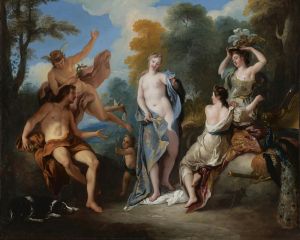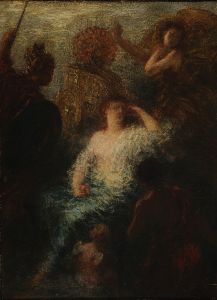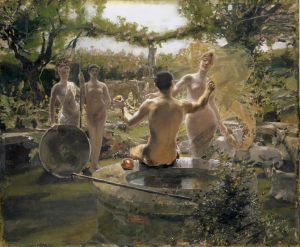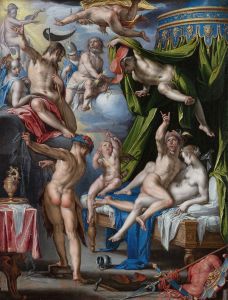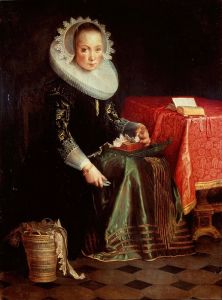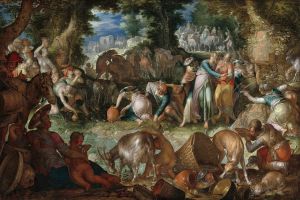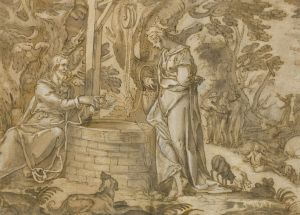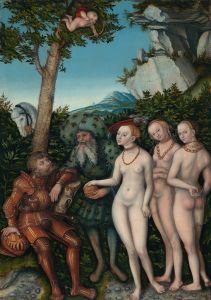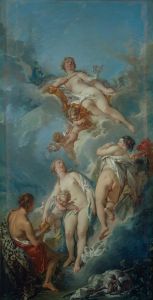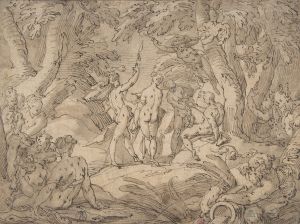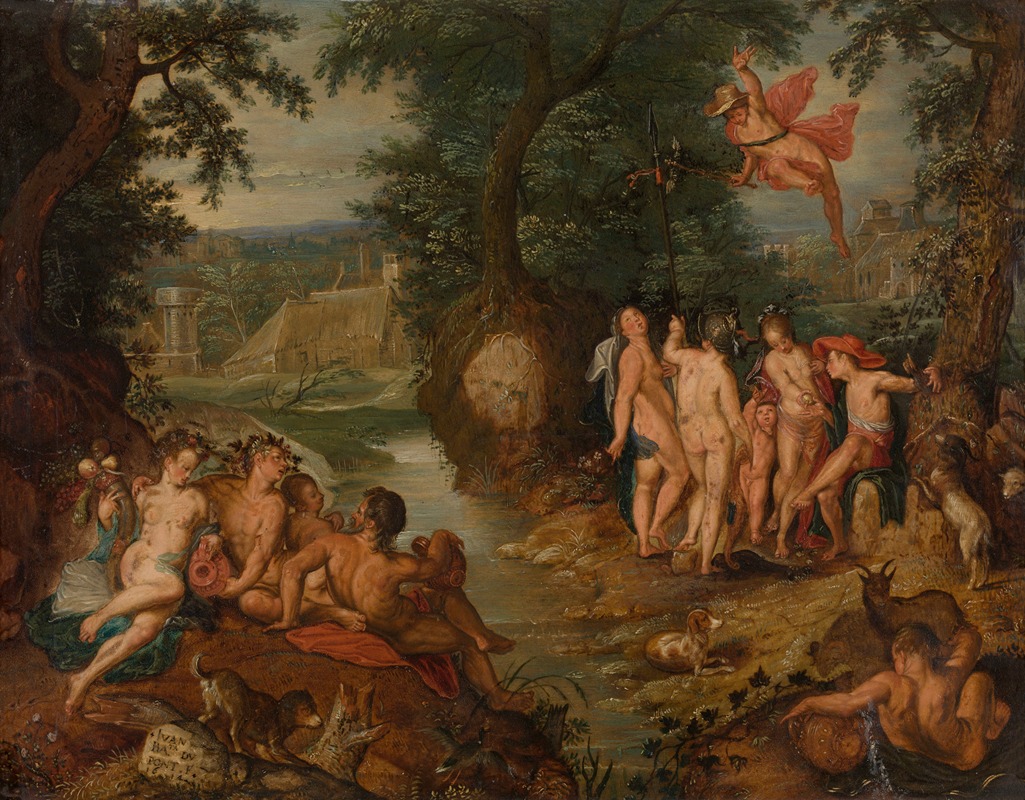
The Judgement of Paris
A hand-painted replica of Joachim Wtewael’s masterpiece The Judgement of Paris, meticulously crafted by professional artists to capture the true essence of the original. Each piece is created with museum-quality canvas and rare mineral pigments, carefully painted by experienced artists with delicate brushstrokes and rich, layered colors to perfectly recreate the texture of the original artwork. Unlike machine-printed reproductions, this hand-painted version brings the painting to life, infused with the artist’s emotions and skill in every stroke. Whether for personal collection or home decoration, it instantly elevates the artistic atmosphere of any space.
"The Judgement of Paris" is a painting by the Dutch Mannerist artist Joachim Wtewael, created in 1615. Wtewael, known for his intricate and highly detailed compositions, was a prominent figure in the Northern Mannerism movement, which was characterized by its artificial elegance and complex iconography. This painting is one of several works by Wtewael that depict mythological themes, showcasing his skill in rendering the human form and his interest in classical antiquity.
The painting illustrates the famous mythological story of the Judgement of Paris, a tale from Greek mythology that ultimately led to the Trojan War. According to the myth, Paris, a prince of Troy, was chosen to determine the fairest among three goddesses: Hera, Athena, and Aphrodite. Each goddess offered Paris a bribe: Hera promised power, Athena promised wisdom, and Aphrodite promised the love of the most beautiful mortal woman, Helen of Sparta. Paris awarded the golden apple to Aphrodite, setting in motion the events that would lead to the Trojan War.
Wtewael's depiction of this mythological scene is notable for its vibrant use of color and meticulous attention to detail. The painting is executed in oil on copper, a medium that allows for a high level of detail and a luminous quality in the colors. The composition is filled with dynamic figures and intricate drapery, characteristic of Wtewael's Mannerist style. The figures of the three goddesses are rendered with idealized beauty, each embodying the attributes associated with her: Hera with regal dignity, Athena with martial strength, and Aphrodite with sensual allure.
In the background, the landscape is lush and idyllic, providing a serene contrast to the tension of the judgement scene. The inclusion of various symbolic elements, such as the golden apple and the presence of Cupid, adds layers of meaning to the work. Wtewael's ability to convey complex narratives through his art is evident in this painting, as he captures both the beauty and the underlying tension of the myth.
"The Judgement of Paris" reflects Wtewael's mastery of the Mannerist style, with its elongated figures, exaggerated poses, and intricate compositions. His work is characterized by a high degree of finish and a keen attention to detail, which are evident in the delicate rendering of textures and the vibrant palette. This painting is a testament to Wtewael's skill as a storyteller and his ability to bring mythological subjects to life with elegance and sophistication.
Today, "The Judgement of Paris" by Joachim Wtewael is held in the collection of the J. Paul Getty Museum in Los Angeles, where it continues to be appreciated for its artistic merit and historical significance. The painting remains an important example of Northern Mannerism and a valuable piece of cultural heritage, offering insight into the artistic trends and mythological interests of the early 17th century.





